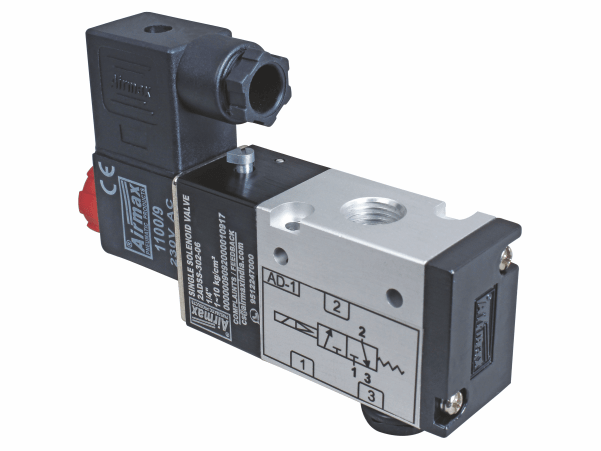It is crucial to choose the right valve to control system pressure, the direction of flow, and the rate of flow when designing fluid power circuits. In any pneumatic application, there are five things that must be considere when specifying directional valves.
1. Function
In pneumatic circuits, directional valves are use to control fluid flow. Types of valves will determine by the action require by your application.
- Two-way valves are designe to allow or stop the flow of fluid, providing a simple on and off function in a pneumatic circuit.
- 3-way valves have three passages within the body of the valve that is used for pressurizing and exhausting a port. Single-acting actuators, such as spring-return cylinders, are typically controlled by these valves.
- One of the most commonly used pneumatic components for directional control is the 4-way valve. These valves offer four distinct flow paths for reversing the motion of a cylinder or motor.
2. Actuator Style
You can actuate a directional valve using a variety of methods depending on your application requirements.
- Push buttons and detented or momentary toggles are examples of manual controls.
- Operators with ball and pin (plunger) style are ideal for mechanical actuation.
- Electrical signals are converte into pneumatic functions by solenoid operators.
- Pilot operators with air pressure are ideal for actuating directional valves from a distance.

3. Flow Rate
Do you need a certain amount of flow at the valve’s output port? For directional control valves to be the correct size, it is important to know the required flow rate of the application. Using a valve that is too large for the application will waste both air and money. An actuator that is too small will not work properly.
Also, read Working Mechanism of A Pneumatic Cylinder
The flow rate is typically measure in standard cubic feet per minute (scfm) passing through a valve at a specified operating pressure (psi). Standard cubic feet per hour (scfh) is another common measurement.
4. Operating Pressure
The operating pressure of a directional valve is measure in pounds per square inch (psi). Since operating pressure greatly affects flow rate, you should review the performance data provided by the manufacturer to ensure that a valve will function properly in your application. If a valve has a flow rate of 9 scfm at 50 psi, it has a flow rate of 20 scfm at 125 psi. Pneumatic valves are usually rate for use with a vacuum (26″ Hg) to 150 psi.
5. Media Compatibility
As with using any media other than air, it is important to check the materials of construction to ensure that the internal components and seals are compatible with the fluid passing through the valve.
Airmax Pneumatics ltd is well known Pneumatic Directional Valve Manufacturer and exporter in India. We have a wide range of directional control valves including poppet valves.




